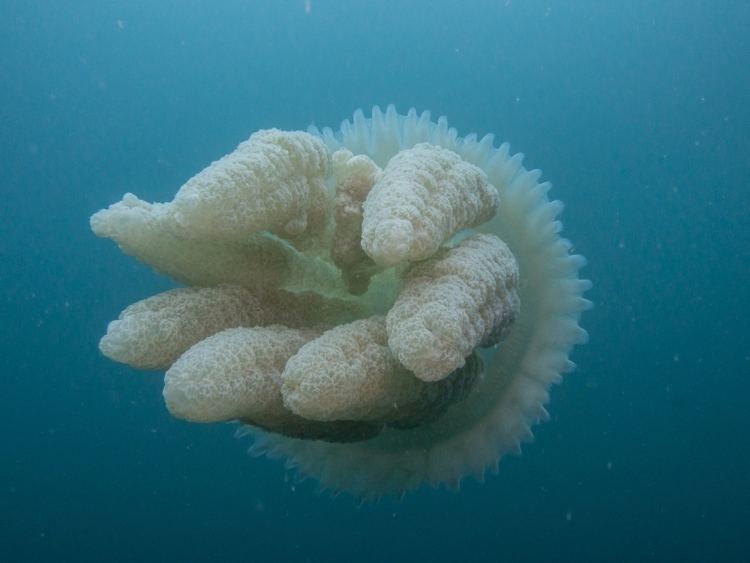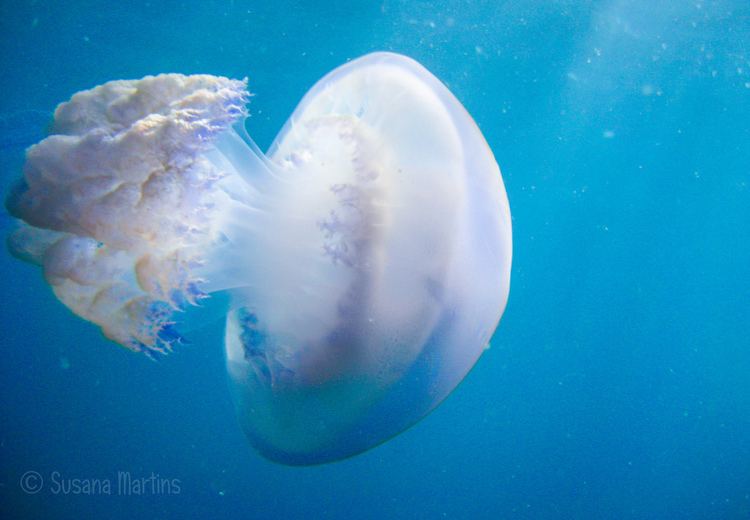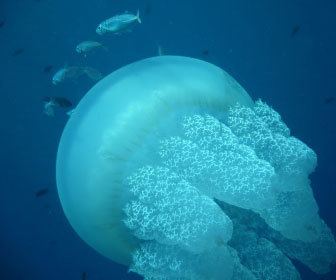Kingdom Animalia Family Catostylidae Phylum Cnidaria Order Rhizostomae | Class Scyphozoa Genus Catostylus Rank Species | |
 | ||
Similar Catostylus, Catostylidae, Rhizostomae, Marivagia, Catostylus townsendi | ||
Catostylus tagi at monterey bay aquarium
The Jelly Blubber (Catostylus tagi) is a relatively common jellyfish. C. tagi has a collagen in its bell which is currently being researched to see if it has biomedical uses as an intercellular matrix.
Contents
- Catostylus tagi at monterey bay aquarium
- Description
- Distribution and habitat
- Food
- Biomedical Use
- References

Description

Typical Catostylus with chunky appendages and tentacle to go with each. This jellyfish will hurt when it stings but poses no serious threat. It is about 12-14 inches in diameter or 65 cm. Its colour is variable and can be blue, cream, brown, or off-white. Certain specimens can have a reddish or purplish brown exumbrellar grooves. C. tagi has gonads along the edge of its stomach in a X shape. It has the octant formation typical of Catostylus jellies, the height of the octants are also variable.
Distribution and habitat

This jellyfish is found in coastal parts of the Indo-Pacific. In Australia, it occurs off the coasts of Queensland, New South Wales and Victoria. It can also enter intertidal estuaries. It is also native to the Mediterranean Sea and the Atlantic Ocean.
Food
Eats both zooplankton and phytoplankton, certain crustaceans, small fish, and marine snow.
Biomedical Use
Its bell collagen is currently being researched for use as a matrix. The collagen is made up of 1/3 glycine and the most of the rest is water and other amino acids, its imino acid content is very small. The collagen is denatured as soon as it reaches 29.9 degrees Celsius.
